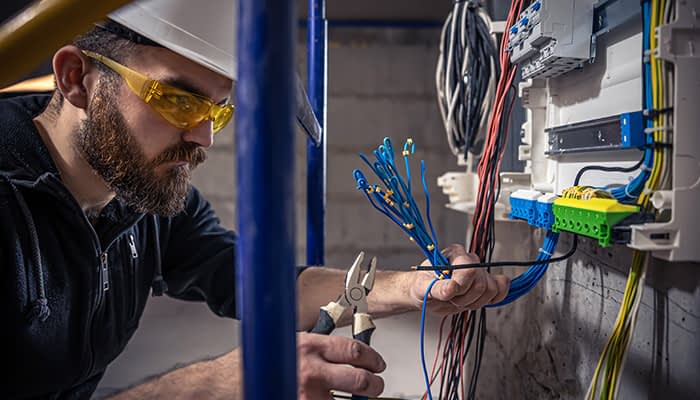Your first-time fix rate can make or break your field service business, as it can either boost or reduce efficiency, productivity, customer satisfaction, and profitability.
To thrive in the field service industry, increasing your first-time fix rate should be one of your biggest goals.

What is your first-time fix rate?
- As a field service professional, you probably know what a first-time fix rate is, but let's break down the definition and discuss why it's important for your field service business.
- A first-time fix rate tracks how often your technicians can complete a job the first time they visit a job site. It's a key performance indicator (KPI) used by many field service businesses to measure technicians' performance.
- Your first-time fix rate affects efficiency, productivity, profits, and customer satisfaction, which is why it's an important KPI to track. By improving your first-time fix rate, you can:
- increase efficiency, as your team will be completing more jobs;
- take on more jobs to grow profits;
- reduce your operating expenses by reducing site visits and using resources efficiently; and
- improve customer retention.
- A low first-time fix rate may indicate that your technicians aren't performing well and that time wasters and inefficient processes need to be eliminated or fixed.
What causes a poor first-time fix rate?
- Several things can cause a low first-time fix rate, but these are the most common causes.
Poor planning
- A lack of planning can lead to a low first-time fix rate. When your business doesn't have the necessary tools, materials, or spare parts for projects, you'll have to order the parts and materials, and your technicians will have to wait. If equipment isn't available because assets are being repaired or replaced, this will further delay your team's schedule.
A lack of skills
- If your workers lack the skills required to do a specific job, their chances of a first-time fix are reduced. Without the knowledge they need, they'll take longer to complete the task or make unnecessary mistakes, increasing the time it takes to finish the job.
Poor communication
- A lack of communication between you and your technicians could affect your first-time fix rate. If you don't give your team enough time for projects, but your technicians fail to let you know how much time they need, they'll have to return to the job site again. Communication makes planning more efficient, which is why collaboration between you and your team is essential.
How to increase your first-time fix rate in 4 steps
- Knowing what a first-time fix rate is, why it's important and what causes it means we can identify simple steps you can take to increase it.
1. Assess your team's skill set
- To improve your first-time fix rate, start by reviewing your team's skill set and identify any skills that need to be acquired or fine-tuned. Once you know what skills are missing or need to be improved, you can introduce a suitable training programme for each technician. Don't approach training as a once-off solution - if you want to keep your first-time fix rate high, you need an ongoing training programme to strengthen your team's weaknesses and grow their skill set.
2. Prioritise preventative maintenance
- To ensure your team has all the equipment required to complete jobs successfully the first time round, you must prioritise preventative maintenance. An effective preventative maintenance plan will help you reduce downtime and asset failure to ensure your assets are available for jobs and increase first-time fixes. To improve preventative maintenance, use Asset Management Software to schedule recurring maintenance jobs to ensure that repairs are done regularly and to keep an accurate record of all asset maintenance.
3. Optimise inventory management
- With optimal levels of materials and spare parts, your technicians will have everything they need for a first-time fix. While it's crucial to reduce storage costs, it's essential to stock the components and materials you need to maximise productivity and increase your first-time fix rate. The most efficient way to optimise inventory management is to use an Inventory Management System to manage your purchase orders, add or remove stock from the system, track stock levels, locate the parts and materials in your warehouses and vehicles, and create picking lists for technicians.
4. Improve communication
- Focus on keeping the channels of communication open between you and your technicians. An effective way to stay connected when you and your team are in the field is with cloud-based Job Management Software. Your technicians can share real-time updates with you when they're on-site, helping you keep track of the progress of all jobs throughout the day. If you need to update a technician's schedule or assign a new job, you can send them the digital job card via the system, which they can access via a mobile app. All the information they need to complete the job will be readily available, reducing the need for unnecessary phone calls and emails and increasing efficiency.
Contact us today to learn more about Eworks Manager and our Inventory Management System, or sign up for a 14-day free trial.



